 They have been loved and loathed, feared and revered but since their introduction to these shores by the invading Roman armies there are now some 9 million pet cats in Britain! Cats are definitely here to stay!
They have been loved and loathed, feared and revered but since their introduction to these shores by the invading Roman armies there are now some 9 million pet cats in Britain! Cats are definitely here to stay!
Reading recently about the plans for a cat café in London by a Street Cat named Bob and his owner James Bowen (see my last post) led me to think about other famous London cats past and present, and whilst staying in London last month I went prowling around to try to locate some of them…
The first cat had to be London’s most famous folklore feline and its owner, Dick Whittington. A legendary rags to riches story, much popularised since the 19th century in pantomimes, Dick left his poverty stricken home in the Forest of Dean to seek his fortune in London and thanks to the ratting abilities of his cat became a wealthy merchant and Lord Mayor of London.
There is much speculation about this story as his family were not that poor, they were in fact minor gentry and it has never been proved that he did actually have a cat! The legends that circulated are maybe based upon a Persian folk tale about an orphan boy who found fame and riches through his ratting cat!
Whatever the story he did become a wealthy merchant and four times Lord Mayor of London. He paid for many projects including the rebuilding of the Guildhall, a ward for unmarried mothers in St Thomas’ Hospital (within the sound of Bow Bells the traditional sign of a true cockney), drainage systems around Billingsgate and Cripplegate and one of the earliest gender segregated public toilets called Whittington’s Longhouse. Seating 128, it was cleansed by the Thames at high tide!
He also had his parish church St Michael Paternoster Royal rebuilt and extended and this is where within its precincts he was buried in 1423.
St Michael Paternoster Royal of Dick Whittington’s time was destroyed in the Great Fire and the baroque church on the site today was built by Sir Christopher Wren. It is also the Home Church of the Mission to Seafarers
I visited early on a Saturday morning and unfortunately the church was locked so I was unable to see the modern stained glass window commemorating Dick and his cat, although I did photograph it from the outside!
 A reverse view of the stained glass cat!
A reverse view of the stained glass cat!
I am grateful to Patrick from Purr ‘n’ Furr for allowing me to reproduce his photo of the window.
The window the right way round!
On to Hodge the beloved cat of Dr Samuel Johnson the English lexicographer.
Hodge can be found in a small courtyard outside Johnson’s house in Gough Square just off Fleet Street.
Hodge sitting appropriately on a dictionary with a pair of oyster shells
Johnson’s biographer Boswell observed their friendship…
“…I never shall forget the indulgence with which he treated Hodge…I recollect him one day scrambling up Johnson’s breast, apparently with much satisfaction, whilst my friend smiling and half whistling, rubbed down his back and pulled him by the tail, when I observed he was a fine cat, saying, “why yes, Sir, but I have had cats whom I liked better than this,” and then as if perceiving Hodge to be out of countenance, added, “but he is a very fine cat, a very fine cat indeed…”James Boswell the Life of Samuel Johnson 1799
“A very fine cat indeed”
The statue by Jon Bickley was unveiled in 1997 and is at a convenient shoulder height for an average adult so it is ideal for putting ones arm around Hodge! Pennies are sometimes left in the upturned oyster shell as a good luck symbol by visitors and sometimes Hodge sports a very elegant ribbon around his neck.
Oysters in those days were plentiful and a cheap food for the poor and were much favoured by Hodge. Johnson thought that it was too degrading to send his servant Francis Barber to get them so would personally purchase them for Hodge.
In the days before tinned food cat meat was often sold by the “Cat Meat Seller”. Let us be clear this is food FOR cats not meat FROM cats! The Cat Meat Man was a common sight in London between the mid 1800’s and the 1930’s. The meat was often left over or diseased horsemeat and offal from the local abattoir, dyed in bright colours to distinguish it from meat for human consumption and for unscrupulous resale!
The sellers had a local regular neighbourhood round of the houses usually of well to do merchants, tradesmen and mechanics and it was said that cats in the area could distinguish one seller from another by the rendering of their song, which was sung to the tune of “Cherry Ripe” a song popular in the mid 1800’s
“…Cat’s-meat, cat’s-meat, meat I cry, On a skewer – come and buy! From Hyde Park to Wapping Wall all the year I cat’s meat bawl! Cat’s-meat, cat’s-meat, meat I cry, On a skewer – come and buy!…”
Social researcher and journalist, Henry Mayhew wrote about cat’s meat vendors in his record of London life, “London Labour and the London Poor” in 1861
“…the carriers take the meat round town wherever their “walk” may lie. They sell it to the public at the rate of 2 and a half pence per pound, and in small pieces on skewers at a farthing, a halfpenny and penny each…”
He noted that the sellers at this time wore a shiny hat, plush black waistcoat, blue apron and corduroy trousers with two or three spotted handkerchiefs around their necks.
The meat was chopped up on a little board on the back of their cart and threaded on the skewer which could be put through the letterboxes of regular customers!
Two eager customers look on longingly as their food is prepared
Thank goodness for tinned cat food today!
Diverting now to some cats featured in London architecture.
A few years ago I took a trip to Camden to find the former Carreras Cigarette Company factory situated in Mornington Crescent.
The vast factory was built between 1926 and 1928 on the large communal gardens of Mornington Crescent. The architects, M.E and O.H Collins and A.G Porri chose to use the Egyptian Revival style which had become very popular since the discovery of the Tutankhamen tomb by Howard Carter a few years earlier and this exotic style would become a frequent feature of this Art Deco period.
 The building was the first factory in Britain to make use of pre-stressed concrete technology and incorporated a dust extraction and air conditioning plant. It opened to great fanfare with the streets being covered with sand to give a truly desert feel in front of the 168 metre long frontage, and cast members from a London production of Aida in ancient Egyptian costumes, formed a procession. A chariot race was also held nearby on the Hampstead Road! They certainly knew how to celebrate the opening of a new building back in the day!
The building was the first factory in Britain to make use of pre-stressed concrete technology and incorporated a dust extraction and air conditioning plant. It opened to great fanfare with the streets being covered with sand to give a truly desert feel in front of the 168 metre long frontage, and cast members from a London production of Aida in ancient Egyptian costumes, formed a procession. A chariot race was also held nearby on the Hampstead Road! They certainly knew how to celebrate the opening of a new building back in the day!
The former factory today
The entrance to the building was dominated by two 2.6 metre high bronze cat statues based on the Egyptian god Bastet
Carreras continued in business on the site until they merged with Rothmans of Pall Mall and transferred their operations to Basildon in 1959, moving one of the sentry cats to their factory there, the other being transferred to their Jamaican factory.
The building was converted to offices in the 1960’s and much of the Art Deco detailing was lost. Renamed Greater London House the features have now been restored and it is still used for offices and ironically giving its former usage as a cigarette factory it is the home of the British Heart Foundation!
The replica big cats still flank the entrance
Carreras were famous for their cigarette brands “Craven A” and “Black Cat”
Old Advertising Sign
The black cat logo can still be seen today
Egyptian detailing now restored
The building is truly a mecca for fans of Art Deco and of course cats!
Not far from Camden a big cat slumbers on the gravestone of his owner George Wombwell in Highgate West cemetery.
Described as a “menagerist” Wombwell ran a travelling zoo during the late 18th and early 19th centuries and allegedly allowed his pet lion Nero to sleep at the foot of his bed!
Another of my favourite big cats in the city has to be the Coade stone lion near the London Eye which gazes haughtily at the passing traffic on the south side of Westminster Bridge. Coade stone, developed by Eleanor Coade at her factory in nearby Lambeth was a type of high fired ceramic and was a popular medium for sculptures in the 18th and 19th centuries.
This lion made at the Coade factory, was originally painted red and once crowned the parapet of the Lion Brewery beside the Hungerford Bridge
Probably London’s most iconic big cats, have to be the bronze lions at the foot of Nelson’s Column in Trafalgar Square.
Landseer’s bronze lion
Sculpted by Edwin Landseer these bronze creatures occupy the space originally intended to house four stone lions which were the the work of Thomas Milne and were named “Vigilance” and “Determination” to reflect the qualities of the Admiral, and “Peace” and “War”.
These “reject” sculptures were bought by the northern industrialist and philanthropist, Titus Salt and sited near his vast factory in Saltaire in North Yorkshire…where they still reside today.
The stone lion named “Peace” in Saltaire…looks like he is enjoying an ice cream!
I digress so now back to smaller metropolitan moggies!
I had recently heard the story of Kaspar the cat who resides in the lobby of the Savoy Hotel and just had to check him out.
I walked off the busy Strand into Savoy Court which leads to the hotel and theatre.
Note the registration plate!
This is one of the few places in London where one drives on the right! This harks back to the days of horse drawn carriages when ladies would sit on the right behind the driver who could then open the rear door without alighting.
Although the driveway is private property, a special Act of Parliament gave permission to contravene National driving laws as guests and theatre goers could be dropped off by taxis outside the doors. After negotiating the small roundabout (which has a turning circle of 25 feet – the same legal turning circle today for all London taxis) cabs could then pick up fares on the way out!
The small roundabout with fountain outside the hotel doors
I passed by the Bentleys and the supercars offloading their wealthy guests and their mountains of luggage and then walked through the revolving doors of this famous luxury hotel. Built by impresario Richard D’Oyly Carte from the proceeds of his Gilbert and Sullivan operas it opened its doors in August 1889, and was the first of its kind to have electric lights, lifts and bathrooms with hot and cold running water in most of its rooms.
I asked the concierge where I might find Kaspar and there he was sitting handsomely on a highly polished table in the lobby!
Kaspar the Art Deco cat sculpture by Basil Ionides
The story of Kaspar began in 1898 when a diamond magnate, Woolf Joel had booked a table for dinner at the Savoy for 14 guests. At the last minute a guest cancelled and the other guests felt that it was unlucky to dine with only 13 people. Joel scoffed at his fellow diners superstitious beliefs and they all sat down to eat. A couple of weeks later Joel was shot dead.
Naturally the hotel’s management felt this was not good publicity and for almost 30 years asked a member of the hotel staff to join the tables of 13 diners.
Diners were unhappy about having a waiter sitting with them at dinner so in 1927 Basil Ionides created “Kaspar” a two foot high wooden black feline sculpture to act as the 14th guest at dinner!
Legend has it that Kaspar was briefly catnapped during WWII and was flown to Singapore by mischievous airmen. Winston Churchill well known for his love of cats, and who often had Kaspar to dine with him, demanded his instant return.
Speaking to a member of the hotel staff I found out that Kaspar is still in gainful employment today and regularly joins dinner parties. He wears a white linen napkin tied around his neck and is served exactly the same food on the same china as all the other guests. Of course the person who made the dinner reservation has to pay for Kaspar’s meal too!
In 2013 the hotel’s River Restaurant was renamed Kaspar’s in honour of the mascot
On Sunday morning after a hearty breakfast at Smiths of Smithfield, a great place to start the day and also wait for the rain to stop, I set off to find a tiny cat in the church of St Bartholomew the Great.
Part of the main entrance remains recognisable by its half-timbered Tudor frontage
Approaching the gateway it is hard to believe the huge church exists at the end of the narrow passageway
Also known as Great St Barts in West Smithfield, this Anglican church and nearby St Barts Hospital was founded by Rahere in 1123 as an Augustinian Priory.
A sunnier view of St Barts on a previous visit…the Barbican looms in the background
The service had just ended as I stepped inside where the air was thick with the smell of incense which just seemed to add to the ambience of this ancient place of worship.
I was welcomed by the new verger who showed me a short video of the church before pointing out the small cat that I had come in search of.
Hard to spot and even harder to photograph this little stone cat corbel sits high up above the south transept
Cats don’t often feature in church architecture so this little chap is something of a mystery!
Remarkably parts of the church survived the Reformation and the Great Fire although very little of the early monastic buildings survive except the cloister which now houses a café.
Cloister window
The church has featured in many films and is probably most famous as the location for the fourth wedding in “Four Weddings and a Funeral”.
The oriel window overlooking the high altar was installed by the Prior in the early 16th century so that he could keep an eye on the monks…literally Big Brother was watching them!
Back outside after having spent a fascinating hour in this little gem of a church, I made my way through the narrow streets towards the Museum of London, pausing to admire the house once lived in by John Betjeman a former Poet Laureate. Given the proximity of St Barts and other city churches, it is no wonder his autobiography was entitled “Summoned by Bells”.
Blue Plaque marks Betjeman’s home in Cloth Court
Back alleyways of Smithfield
Another encounter with Dick depicted in the tiles on stairs leading to the Museum of London
and his cat scampering on ahead on the first floor landing!
Whilst researching other matters here today, guess what… I came across another cat!
Novelty jugs such as this one in the shape of cats were popular in Stuart London and used for cream, milk or wine. This one is an example of English tin glazed ware
After my visit to the Museum which is never complete without the purchase of at least a couple of books from their excellent shop, I headed off to Bloomsbury in search of Sam.
Not much is know about Sam but I had heard that he resides on a small brick wall in Queen Square. On my way up Old Gloucester Street, I passed by the Alf Barrett children’s playground and spotted another cat…not Sam but “Humphry”!
Humphry sculpted in 1997 by Marcia Solway
Humphry the cat (1973 -1992) was a ginger tom who had lived at the Mary Ward Adult Education Centre situated at the corner of the road and his statue was originally sited on Queen Square. It was relocated in 2001 and is the only complete sculpture by Marcia Solway, an epilepsy sufferer who attended sculpture classes at the centre and the nearby National Hospital for Neurosurgery until her death aged 34.
These days children from the nearby Great Ormond Street Hospital visit the playground and apparently, Humphry is a great favourite.
Even the children’s ambulances feature cats!
Crossing into Queen Square I soon found Sam descending a wall in the south western corner of the park. Whilst little is known about him, Sam was owned by Patricia Penn (1914 – 1992) also known as Penny, a local cat loving resident who was an active fundraiser and campaigner in the area
Sam preparing to descend his wall set in the flower beds
Sam is clearly popular as like Hodge, he has amassed a few donated pennies! Pennies for Penny perhaps?
My last cat to track down was south of the Thames and was a favourite pet cat of the Salter family. Dr Salter, a 20th century reformer along with Ada his wife did much to alleviate poverty in the local area.
The scuptures by Diane Gorvin were first installed in 1991 and featured Dr Salter, his daughter Joyce and their pet cat sited next to the Thames on Bermondsey Wall East. Unfortunately in 2011, Dr Salter’s statue was stolen by metal thieves and the girl and cat were taken into the care of Southwark Council. They have been recently been reinstalled and reunited along with a new sculpture of Mrs Salter. I plan to write a more full account of the Salters in a future article.
The cat ready to pounce, now back in his former home on the wall of the Thames
One London cat that must get a mention is Mr Pussy, the sleek black muse and companion of The Gentle Author, of Spitalfields Life. It was The Gentle Author’s daily blog posts about the life and lives of the people of the area which encouraged me to begin writing my own articles. 
Many thanks to the Gentle Author for permission to use this lovely photo of Mr Pussy relaxing at home with his spring flower arrangements
Although I have never been fortunate enough to meet Mr Pussy “in the fur” so to speak, I feel that I know him very well through the carefully observed articles about him that his owner occasionally writes.
I came across many real life cats whilst tracking down the more celebrated Metropolitan Moggies, so here are a selection of these unsung felines!
A sleek cat having a wash and brush up at the Clerks House next to St Leonards Church Shoreditch
Not a real life cat but one who presided over the former pottery behind Columbia Road
Gilbert Laxeiro the fluffy white cat who lives at the Laxeiro Spanish restaurant on Columbia Road even has his own Facebook Page!
 Another white cat living happily aboard a Dutch barge on Greenland Dock
Another white cat living happily aboard a Dutch barge on Greenland Dock
 Ham Common cat on sentry duty!
Ham Common cat on sentry duty!
 Enjoying the spring sunshine, Deptford!
Enjoying the spring sunshine, Deptford!
Finally I went to find possibly London’s smallest sculpture which given its subject should be of great interest to most cats…MICE!
In Philpot Street in the shadow of the new “walkie talkie” high rise office block, on a building which now houses a coffee shop, is a tiny sculpture of two mice and a piece of cheese!
Probably unnoticed by most of the café patrons and passers by, the sculpture picked out in brown and yellow is tiny and not very easy to photograph.
There are many urban myths about the sculpture and its provenance. The most commonly held belief is that they are there as a memorial to two builders who were working high up on scaffolding. During their lunch break a fight broke out when one accused the other of nibbling his cheese sandwich! It seems that as a result both the builders fell to their deaths from the building. Later it became apparent that mice had been the culprits all along! Maybe they should have had a cat on the building site..?
Since writing and researching this piece I have discovered several more moggies in the metropolis which will be the focus for another journey and maybe a future article.
In the meantime, I will leave you with a photo of my feline friend, who although actually living next door, spends much of his day curled up in my kitchen or lazing in my garden.
That’s cats for you!











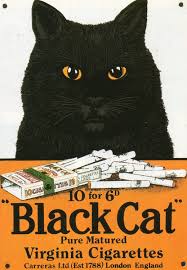
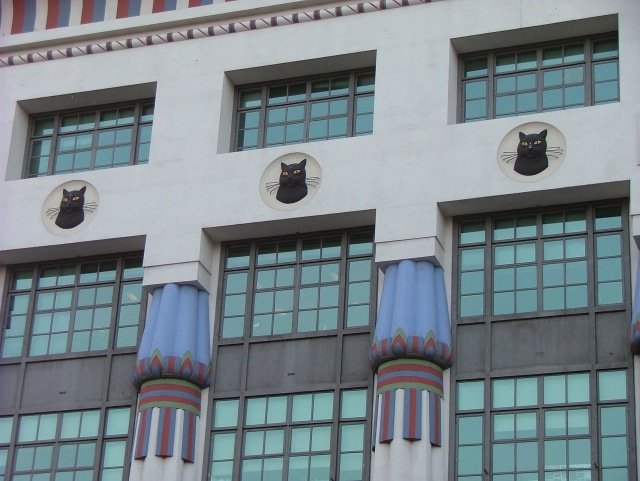

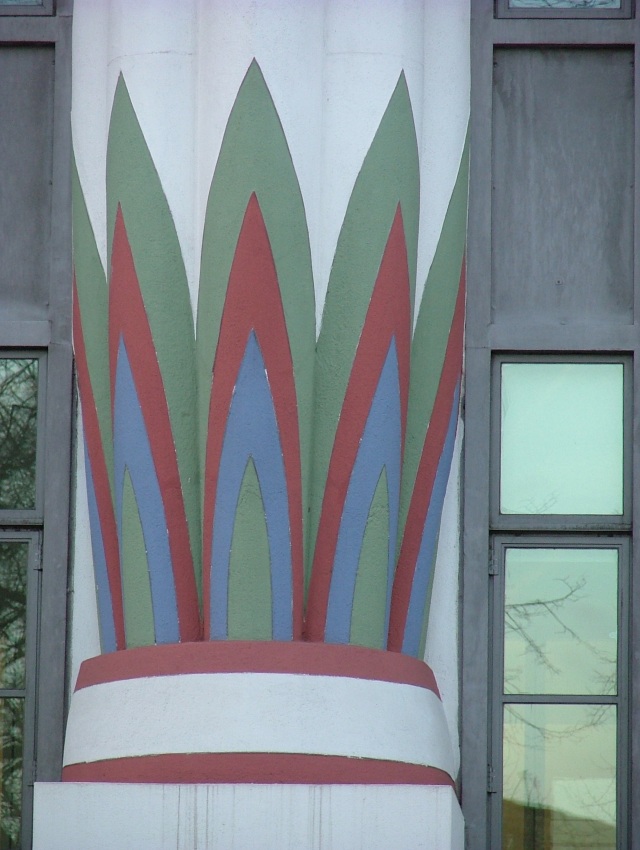











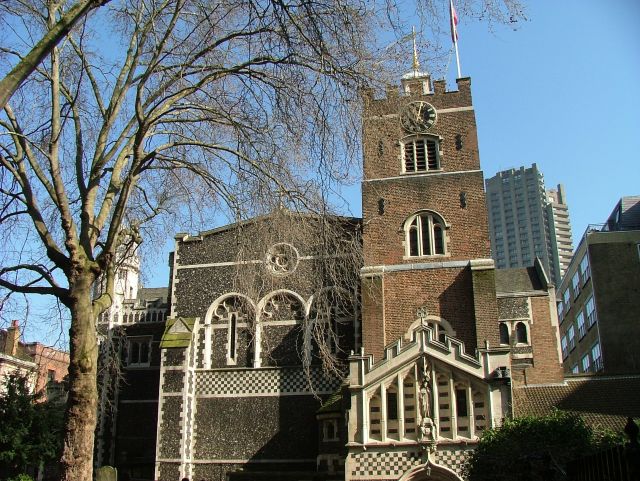
















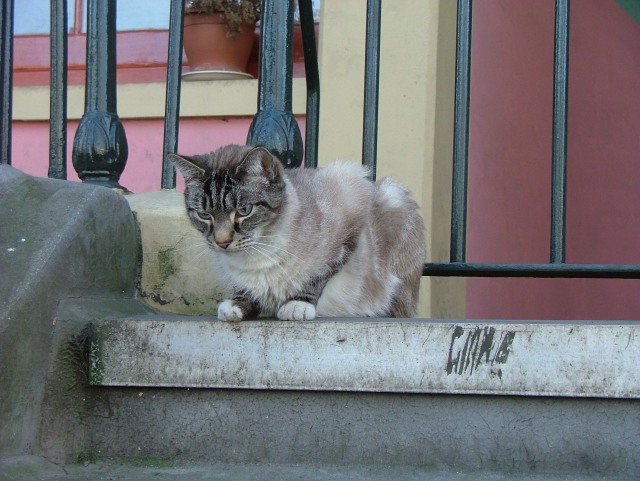



Thank-you for a Purr-Fect Article!
What a thoroughly enjoyable and entertaining blog Anne, with fabulous photos to match! Purr-fect article indeed x
Thanks Anne for you entertaining blog. I didn’t know that cat meat was sold door to door. You learn something new every day.
Flats at Myatts Fields se5 are adorned by cats; a reference to the landowners’ family name, Minet.
Delightfully fascinating, beautifully illustrated and pleasure to read, thanks Anne
Thanks Terry so glad you enjoyed it! Anne
What a lovely article! I love having some kind of “hunt” to drive my exploration of a new place, or to take me to lesser known spots in a place I’ve been many times. You capture that so well!
Thank you so much! I always do some research before a trip and find that one thing leads to another en route! The best way….I think!